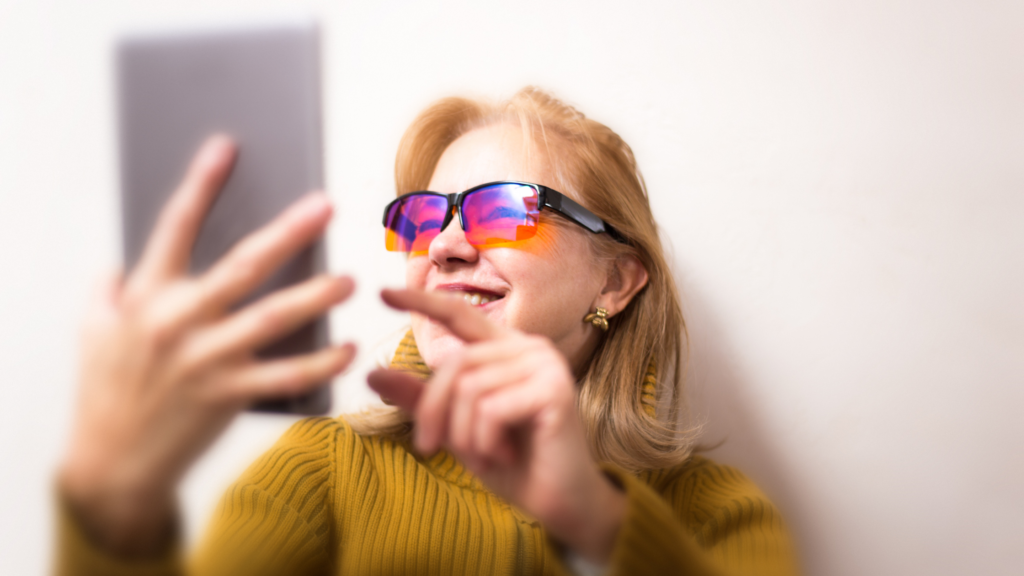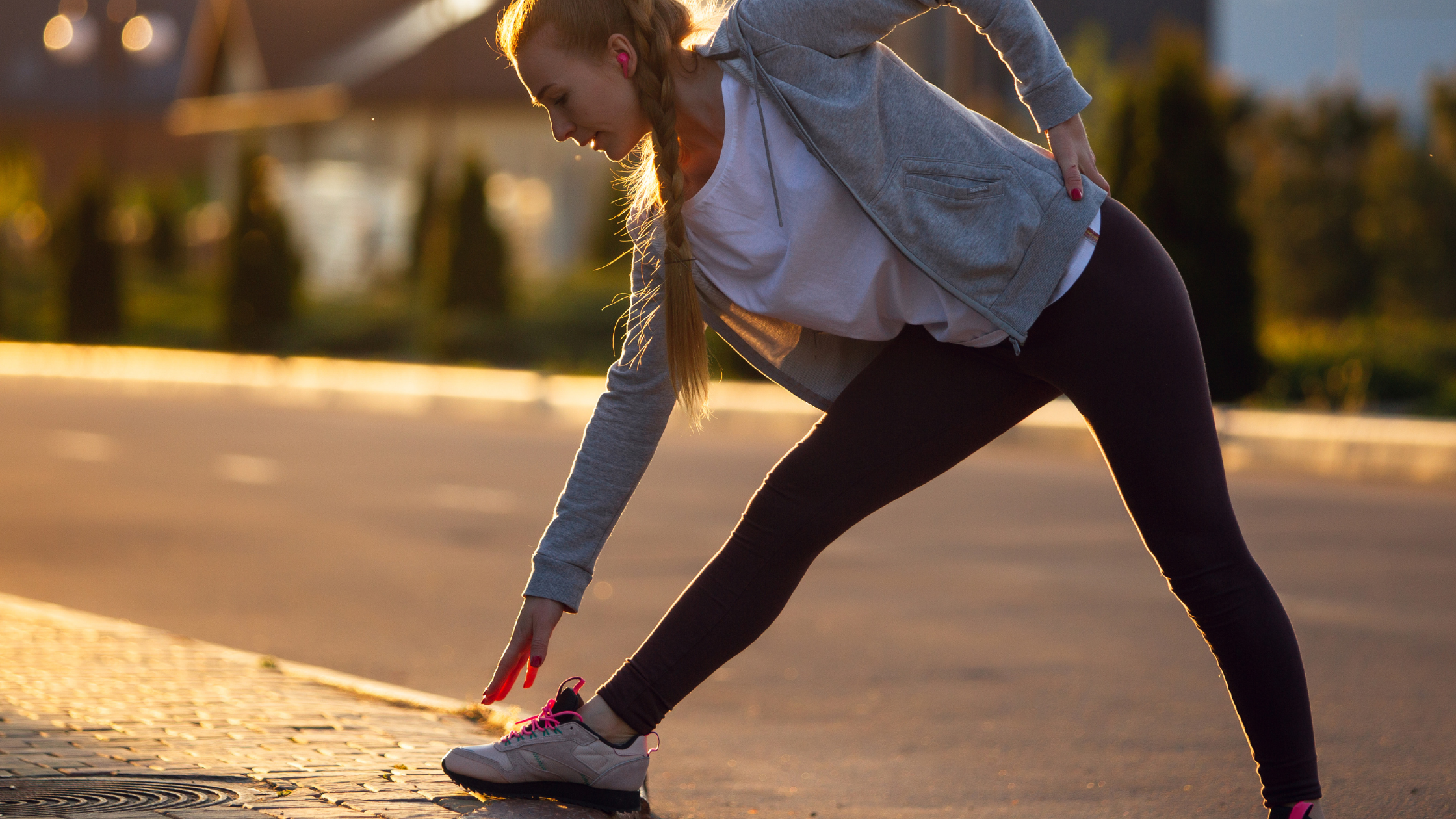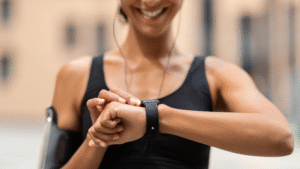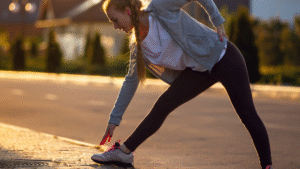Getting quality sleep is one of the most important factors for peak performance. In the age of screens, many biohackers turn to blue light blocking glasses as a tool to improve sleep. But do these amber-tinted glasses genuinely help you sleep better, or are they just hype? In this deep dive, we’ll explore the science behind blue light and sleep, what research says about blue light glasses, and review an example product (SleepX Blue Light Blocking Glasses). By the end, you’ll know if blocking blue light is a biohack worth trying for better ZZZs.
The Problem: Blue Light and Your Sleep Cycle
Modern life means we stare at bright screens late into the evening – whether it’s a laptop, phone, or TV. These devices emit a lot of blue light, a short-wavelength light that the brain interprets as daylight. Normally, as night falls, our eyes would see less blue light and our brain’s pineal gland would start secreting melatonin, the hormone that makes us sleepy. However, when you’re scrolling at 11 PM, the screen’s blue glow can trick your brain into thinking it’s still daytime. The result? Suppressed melatonin and a shifted circadian rhythm that makes it harder to fall asleep.
Research has documented this effect: for example, one study found that using an e-reader before bed (versus a paper book) not only made it take longer to fall asleep but also reduced REM sleep and next-morning alertness. Blue light exposure at night can even nudge your body to produce daytime hormones like cortisol when you should be unwinding. Over time, nightly screen exposure might contribute to insomnia or just not feeling well-rested.
The Solution?: Blue Light Blocking Glasses
Enter blue light blocking glasses (sometimes just called blue-light filters or amber glasses). These specialty specs have lenses that filter out most blue wavelengths of light. They often have a yellow-orange tint (since they’re removing blue, leaving the warmer colors). The idea is simple: wear them in the evening while using your devices or under harsh indoor lighting, and they will block the melatonin-suppressing blue light. You can thus still do your late-night email check or Netflix binge, while your brain thinks it’s in relative darkness.
But do they really work to improve sleep quality? Biohackers swear by them anecdotally – you’ll hear many folks say that after putting on their orange glasses at 9 PM, they get yawny by 10:30 and sleep like a baby. Let’s see what the research says:
Sleep Onset and Quality: Some small studies show promising results. In one randomized trial, participants who wore blue-blocking glasses for 3 hours before bedtime significantly improved their sleep quality and mood compared to those who wore clear placebo glasses. Another study on people with insomnia found that wearing blue light glasses in the evenings improved their total sleep time and sleep soundness over a two-week period. These findings suggest that, especially for individuals with sleep difficulties, blocking blue light at night can help signal the body to transition to sleep.
Next-Day Alertness and Performance: An interesting study out of Indiana University found that participants who wore blue-light glasses in the hours before bed not only slept better but also performed better at work the next day, with improved focus and engagement. Essentially, by hacking their sleep with the glasses, they were more productive the following day. Night owls (people with late-evening circadian preference) seemed to benefit the most, since they often experience a bigger misalignment between typical schedules and their natural clock.
Mixed or No Effects: Not all research is glowing. Some studies with healthy adults found no significant improvement in objective sleep measures (like actual time spent in deep sleep) from wearing blue blockers. And a 2017 meta-analysis (a study of studies) concluded there wasn’t enough evidence at the time to confidently say these glasses improve sleep or reduce eye strain. One reason for mixed results is that not all blue light glasses are equal – different products block different ranges of light. Also, individual differences matter: people with serious insomnia or circadian rhythm disorders may benefit more, whereas a good sleeper might notice little change.
Expert Opinions: Sleep medicine experts often say that while the theory behind blue-blocking glasses is solid, the consistency of benefit isn’t fully proven. Dr. Steven Lockley of Harvard points out that products aren’t standardized – we often don’t know exactly which wavelengths a given pair of glasses is blocking – making it hard to compare results. However, many also say “it might be worth a try” because the downside is minimal. After all, wearing orange-tinted glasses for a couple of hours won’t harm you, and it just might help if you’re sensitive to evening light.
Bottom line: Blue light blocking glasses can improve sleep quality for some people, especially if you have a lot of screen exposure at night or have trouble winding down. Research suggests benefits like falling asleep faster and getting more restorative sleep, but results vary. They’re not a magic cure for insomnia, but as part of a “sleep hygiene” routine (along with things like dimming house lights and avoiding late caffeine), they seem quite helpful.
Product Review: SleepX Blue Light Blocking Glasses
To put theory into practice, I tested a popular example product: SleepX Blue Light Blocking Glasses. These glasses are an affordable pair marketed for evening use to improve sleep. Here’s my take after using them for a couple of weeks:
Design & Comfort: SleepX glasses have a lightweight plastic frame with amber-orange lenses. They look similar to casual eyeglasses (though the lens tint is obviously orange). I was able to wear them over my prescription glasses (SleepX has an “fit-over” style frame that’s roomy) which is great. They’re comfortable and I often forgot I was wearing them after a few minutes. The style is unisex and relatively modern; I didn’t feel goofy wearing them around the house, but I probably wouldn’t sport them in public – these are more of a private bedtime routine accessory!
Blue Light Blocking Power: The product description says they block about 90%+ of blue wavelengths. I didn’t have a spectrometer to verify, but subjectively, they make all screens and bulbs look very warm (whites become amber). When I put them on, my phone’s white background immediately looked like a sepia tone. This indicates they are filtering a substantial chunk of blue. Some high-end glasses block even more (some advertise 99-100% of blue and even some green light), but those often have very dark orange or red lenses. The SleepX balance of blocking versus visibility was good – I could still watch TV or read my phone; things were just tinted orange.
Effect on Sleep: I began wearing SleepX glasses about 2 hours before my target bedtime each night. I was skeptical, but I noticed a difference after the first few nights. I found myself feeling sleepier earlier than usual. Normally, I might feel wired at 11 PM if I’m on the computer, but with the glasses on, I was catching myself yawning by 10:30. It’s a subtle shift, but I did feel it. Over the two-week period, I also subjectively felt my sleep was deeper – I woke up fewer times in the night. This lines up with those small studies where people reported better sleep quality with the glasses. Could it be placebo? Possibly – I knew I was testing a sleep aid, after all. However, given the scientific rationale, I believe the glasses genuinely helped my body prepare for sleep.
When to Use: The SleepX glasses are meant for evening indoor use. I got into a habit of putting them on after 8 PM. I’d even sometimes wear them to the bathroom under bright lights while brushing teeth (those bathroom vanity lights can be super harsh at night). Within about 10 minutes of wearing them, everything looks “late-evening” in hue, which psychologically also helped me disconnect from daytime thoughts. One night I didn’t wear them and used my computer – and I noticed it took me longer to feel sleepy. That little experiment convinced me that, at least for me, they’re effective.
Build Quality: For an affordable pair, the build was decent. The hinges are okay (not the sturdiest, but fine with gentle use). They come with a simple soft pouch. You can get much more expensive blue blockers with fancy frames; SleepX is going for function over fashion. As long as you treat them normally, they should last. The lenses did not have any noticeable distortion or blur.
Overall Verdict on Blue Light Glasses: Blue light blocking glasses like SleepX are a simple yet effective biohack to consider if you struggle with sleep or spend a lot of time on screens at night. The science behind them is plausible, and while not every study shows a dramatic effect, many users (myself included) report easier time falling asleep. Importantly, they don’t replace good habits – you should still aim to shut down electronics well before bed if possible, and cultivate a relaxing pre-sleep routine. But let’s be real: sometimes you have to finish that work or you just want to watch a show at 10 PM. In those cases, throwing on a pair of blue blockers is a smart move to shield your biology from the modern world. For ~$20-$50, it’s a low-cost experiment that could pay off in better nightly recharge.
Call-to-Action: If you’re curious to try this hack, grab a pair of blue light blocking glasses (many are available on Amazon; look for ones with good reviews and high blue-light filtering). Wear them after sunset for a week and note any changes in your sleep. You might be pleasantly surprised at how much deeper and faster you fall asleep when your brain isn’t being fooled by artificial blue light. Sweet dreams and happy biohacking!












